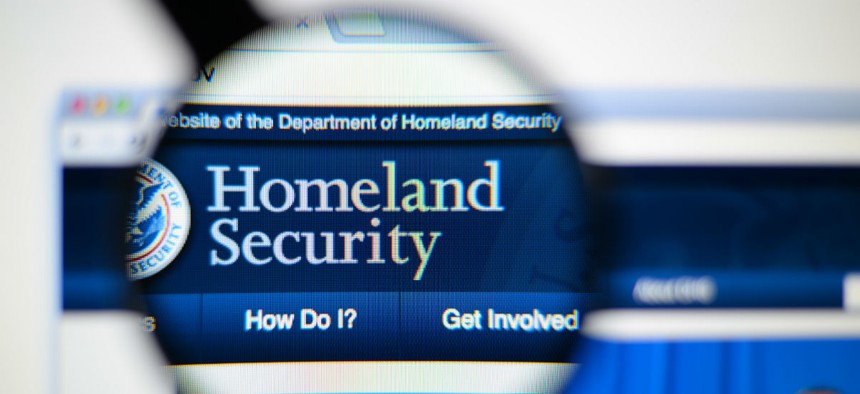
Gil C/Shutterstock.com
Election Could Have a Major Impact on DHS Agencies
A new analysis shows how Clinton and Trump might reshape the direction of Homeland Security.
The next administration could substantially reshape the direction of the Homeland Security Department, a new report shows.
The analysis by big data and analytics firm Govini breaks down the procurement dynamics that will govern the next administration’s spending at agencies across the department, including Customs and Border Protection, the Transportation and Security Agency, Immigration and Customs Enforcement, U.S. Citizenship and Immigration Services, and the Coast Guard.
“Homeland security is critical, but the way it’s achieved is highly debatable between both parties,” said Matt Hummer, director of analytics at Govini, based in Arlington, Va. “DHS is in the midst of a modernization period, reevaluating the mission of each of its agencies, its cost structure and the effectiveness of the assets and personnel it’s throwing at the problem. Any new administration is going to have a lot of influence on that.”
Three objectives underpin department spending, Govini found: modernization, mission relevancy and cost-effectiveness. “Each agency under DHS has its own meaning of the objectives and is seeking to leverage technological advancements in mobility, the Internet of Things, digital transformation, data analytics and cybersecurity to achieve their goals,” the report said.
TSA in particular is in a transition period, Hummer said. “From a personnel standpoint they’re doing a lot of reorganization, and from a concept of operations standpoint they have a lot of capability gaps they need to close.”
As with other Homeland Security agencies, TSA needs to achieve the right balance between personnel and technology, a dynamic that played out over the summer as the agency sought to reduce security line wait times at airports. “Throwing bodies at it isn’t necessarily going to solve it,” Hummer said, “so TSA is in the midst of reorganizing the agency and also investing seriously in the next generation of detection and screening technology.” CBP is going through a similar balancing exercise at the border.
Govini projects that obligations for TSA, CBP and the headquarters Office of Procurement Obligations, will grow by at least 3 percent in 2017. The department is routing an increasing percentage of mission funding through OPO, Govini noted, much of it related to cybersecurity programs, which are expected to grow regardless of who wins the November election.
Support for TSA is likely to be strong under either a Clinton or Trump presidency, Govini found, while “a Trump presidency would most certainly mean more funding for [CBP’s] Fencing and Infrastructure Technology account given the candidate has repeatedly advocated for building a wall between the U.S. and Mexico. However, construction firms are likely to win most of the work rather than the current roster of advanced technology and services companies.”
The Coast Guard faces the greatest uncertainty, regardless of the election outcome: “The agency fought hard to gain the additional funding required for recapitalization, and once the fleet is replenished, funding levels are likely to return to normal without additional support. As the overseer of U.S. ports and waterways, USCG could also get caught up in anti-trade rhetoric coming from both campaigns.”
While Trump has promised to re-negotiate existing trade deals, Clinton has withdrawn her support for the Trans-Pacific Partnership. With more than half of U.S. imports entering the country through maritime ports, that could put pressure on the Coast Guard to reduce associated spending, Hummer said.
Image via Gil C/Shutterstock.com.







